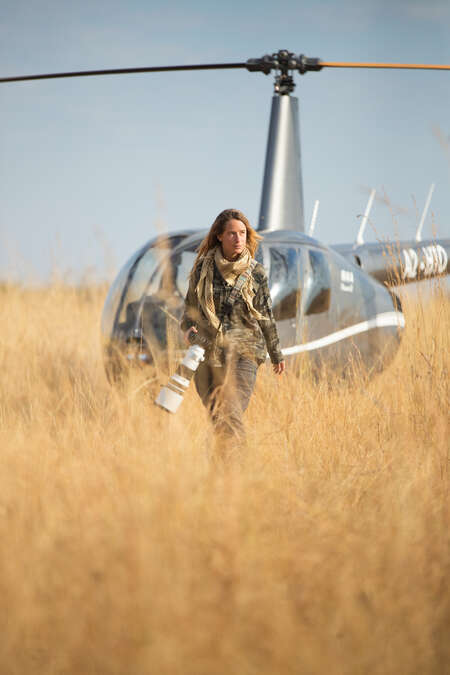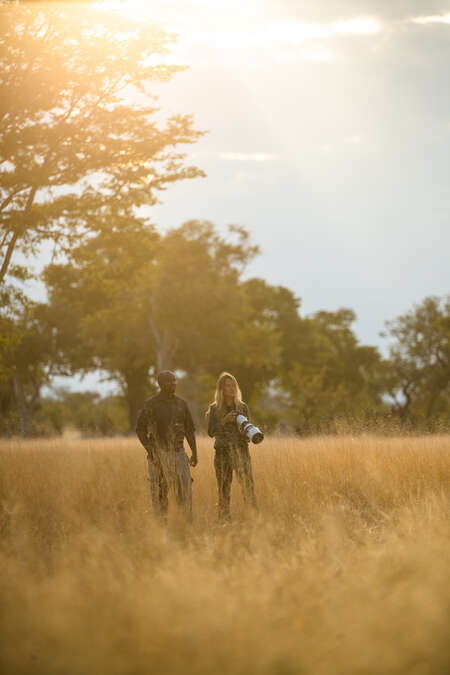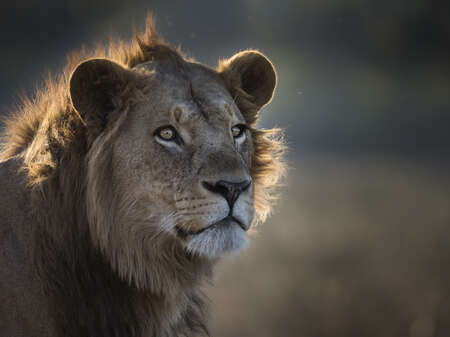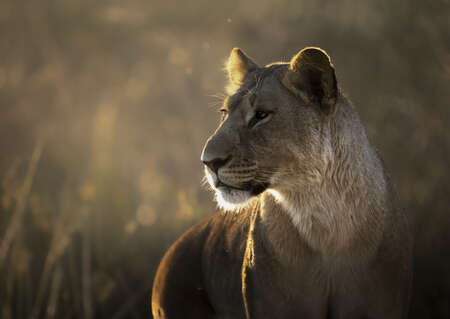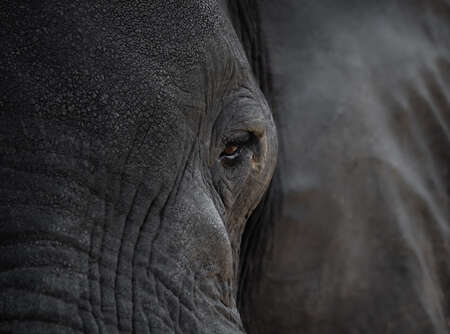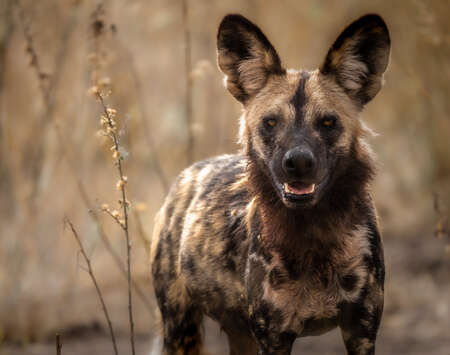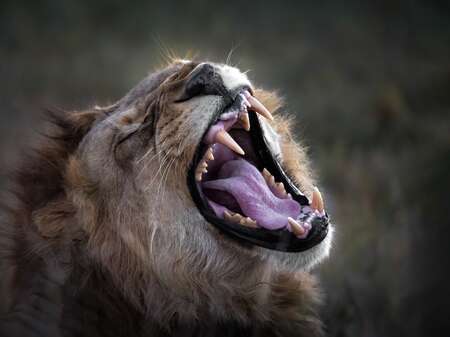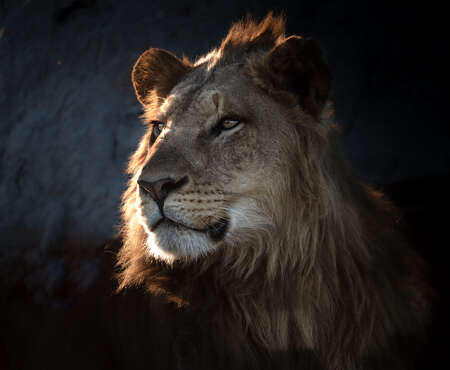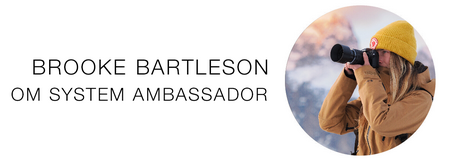Morning has come, the red sun is rising over the Okavango Delta. The air is cold. I can see my breath, watch its faint puffs rise in the soft morning glow. Mid-July is winter here. I’ve managed to escape the scorching temperatures of the American South-West and found myself in a beautiful, chilly wonderland of wildness. The safari vehicle winds down a sandy track, bending between Mopane and Apple Wood trees, going slow enough that we can spot wildlife in the bush but fast enough that the wind tugs ever so slightly at my hair and fills me with a bubbly laughter that builds inside my chest and spills out before I can stop it.
In this moment, I am so happy. A lifelong dream has come true. I’m exploring Botswana with Olympus, documenting the wildlife and the connection between Olympus, their partner Wilderness Safaris, and the local communities that Olympus and Wilderness Safaris support.
The Wildlife
There really aren’t enough words in my vocabulary to describe the wilderness surrounding the Okavango Delta. The primary words that come to mind are pristine, biodiversity, and abundance, but even these words fail to really describe just how magic this place is for wildlife. Everywhere we go, we witness nature at its purest. Elephants escort us down the dirt roads as we drive away from camp. Baboons parade alongside us as we make our way to an outdoor lunch beneath a cathedral of Mopane trees. Lions call out across the bush, their roars echo inside my room while I review photos. To witness wildlife in such an abundance is to feel like I’ve found a place in the world where my soul feels light. To know that there is a place in the world where wildlife is prioritized and respected as a national treasure fills me with so much hope and inspiration.
My expectations for wildlife photography here have been far exceeded. Not a day has gone by without multiple encounters with charismatic wildlife. I can’t describe the magnitude of emotions when watching lions move through the golden hour light, or witnessing elephants wade across the river on a clear, sunny morning. I am so grateful to have my camera with me to capture these moments so I can try to convey at least some of the magic to those who see my images because words will always fail short when trying to describe these experiences.
Get on Eye Level
Who goes to Botswana and doesn't think of lions as the subject that they just absolutely want to get a photo of? One of my best tips for capturing images like this – whether it’s a lion or an animal in your own backyard – is to get eye level with your subjects. It may take a lot of waiting and uncomfortable positioning, but it always make for a far more intimate and impressive image. Part of the best things about wildlife photography is the fact that with the power of a long lens you get to show the world something you could never actually see with the naked eye. I would never actually in real life be eye to eye this close to a lion as close as my lens is portraying me to be. Because of the trick of having a long lens I’m able to give off the effect that this lion and I are standing face to face. Utilizing your camera’s rotating LCD screen you can hold your camera down low, swivel your back screen up or hold your camera up above your head, and swivel your back screen down so you can still see what's in frame in order to force that eye level perspective.
Look for the Light
This was my last day in the area where we would be seeing lions. We got there in the middle of the day as the lions were lazy, out in the open – napping in the middle of this grassy field. The grass was pretty tall and they didn’t move for hours. Finally, it was about two o’clock in the afternoon and they started moving around and yawning. They were up, but the light was really harsh, you could see all of the grass behind them, and you could barely see where the lion ended and the grass began because there was no subject isolation. I wanted to wait as long as we would, so we waited until finally the golden hour started.
I needed good light in order to make this photo work. I needed my subject to isolate itself from the backdrop, the hazy light picking up the dust and dirt particles in the air finally made it so that the lion and the grass weren't indistinguishable from the other. We moved the safari vehicle slowly around the lions so the light was doing a little bit of back lighting – or side lighting – and it lit up the fine hairs on this lion’s ear. It caught her one eye and made it look like it was glowing. It was a moment where I actually had to put my camera down at one point because it was just so beautiful to see with the naked eye.
As wildlife photographers, we all know that we have to be patient when it comes to our wildlife subjects. We’re all used to waiting a long time for our subject to appear, or to find our subject, or for a subject to lift their head or start moving around. Sometimes we can get a bit more impatient when it comes to light. I have a saying that I'd rather photograph a squirrel in great light, than a lion in bad light – and this situation kind of exemplified that. When the light was bad, I wasn’t super interested in taking a photo because I knew it wasn’t going to live up to the expectations that I had for myself. When I was patient and waited for the light to get good again, that’s when everything really changed and I walked away with an image I could be pretty proud of.
Get Abstract
If you’ve never seen an elephant, to put it into perspective: however big you’re imagining them to be, they’re bigger than that! They’re huge, which was hard to photograph. I’m not used to photographing animals that large – the largest animal I usually photograph is a bison, bear, or moose. These animals are big, but they’re not towering over me. I was so out of my element when I was trying to photograph these elephants and my images were showing it. I was struggling to get eye level, especially because their eyes are so small compared to their bodies. I was struggling to compose and frame the images, because I wasn’t as familiar with their behavior. They were typically traveling in herds, so a lot of my more zoomed-out images would have around 10 elephants in frame and it was distracting – so I thought, “I have to get a bit abstract!” I needed to cut out all of the distractions and get as abstract as possible while still being able to show what animal I’m photographing.
So I ended up spending a whole day where I was zooming in as tightly on different parts of the elephants. The image that ended up being the most interesting was the one where the elephant’s eye is in frame, but I also took a lot of photos where I was zoomed in on an elephant’s wrinkles, where you could see the shadows on their skin. I thought it told a pretty interesting story.
I captured this photo five minutes before our last day of photographing wildlife came to an end. Anybody who knew me going into this trip know there was one animal that I wanted to see above all else: an African painted dog, also known as an African wild dog or African painted wolf. These African painted dogs are very closely related to the wolves that we see in North America – a bit smaller, but they are pack hunters. The way they hunt is unlike any other animal I’ve ever seen. They’re pretty brutal in their hunting tactics and they’re very elusive – and they are ridiculously beautiful. Days went by and we were driving back from our video shoot, and were less than five minutes from our camp. As we drove around a bend in the road, my guide stopped the vehicle and pointed out a track – the fresh tracks of a pack of wild dogs. So we decided to follow them!
We drove for awhile before we caught up to the wild dogs, which had just finished eating. They were all laying in the sun, resting. We pulled up near to them and one of the dogs stood up and looked at us a bit, to check us out and see what we were up to before laying back down. My trip was made in this moment that happened literally in the last five minutes of shooting.
The Camps
I’m being hosted at two different camps while visiting Botswana, both of which are Wilderness Safaris premier camps - DumaTau in the Linyanti Wilderness Reserve and Vumbura Plains on the Okavango Delta. The suits are lightyears beyond my usual accommodations in the field for wildlife photography. The artful, contemporary camps made from wood, glass, and canvas are surrounded by a wealth of wildlife and are packed with comforts like fine dining and lounges. Wilderness Safaris constructed these camps with the wildlife and landscape in mind - the camps are constructed from locally sourced materials and are not fenced. Their open and unobstructed design allows wildlife to pass through the camps as they move along game corridors. Raised boardwalks between suites and lounges dip down to ground level every few meters to allow elephants and hippos to march across, while the raised sections of boardwalk enable smaller wildlife like leopards and baboons to pass below. Every few years, the camps are completely disassembled and rebuilt in new locations in order to allow plant life to regenerate in the previous location.
When you consider how carefully the camps are designed to coexist with wildlife, it should come as no surprise that wildlife can frequently be spotted from suites and communal areas. The sound of hippos and lions serenade me all day and night, and herds of elephants join me periodically while I explore the camps and their various amenities
The Community
The most impactful portion of my trip has been visiting the village of Eretsha - one of the communities on the Okavango Delta where Olympus and Wilderness Safaris have partnered to support the locals who play a key role in the conservation of the region's wildlife. Many of the expert guides and staff that run the nearby Wilderness Safaris camps and other safari lodges were born and raised in rural communities like Eretsha. When Covid caused the tourism industry to shut down last season, many of the locals found themselves without income for extended periods of time. Wilderness Safaris identified an opportunity to offer a hand to those families that lost their income and raised donations of food and household staples. I was able to participate in one of the distributions of these supplies, and while visiting I was shown some of the other initiatives Wilderness Safaris and Olympus are supporting in the area.
Through Wilderness Safaris partner nonprofit Children in the Wilderness, Olympus contributes to ongoing local conservation efforts by facilitating leadership development and education for children in Africa. The fight to conserve our wild spaces is an ongoing one. The best way to ensure that places like Botswana’s Okavango Delta are preserved for future generations is by giving those generations the tools they need to carry the conservation banner into the future. Children of the Wilderness focuses on offering opportunities for rural children to participate in eco-education programs, laying the building blocks for careers in conservation and wilderness-based industries.
The sun sets across the glassy surface of the river outside my suite and the Bell Frogs take up their tinkling nightly chorus. The hippos grunt and splash along the dark, muddy riverbanks, their grunts echoing through the camp. In this distance lions call back and forth to one another with voices that thunder across the bush. I fall asleep feeling so lucky to be alive in a world with wilderness.
Experiences like this remind me just what a wonderful planet we live on. May we always fight to protect it.
Instagram: @brookelittlebear
Brooke is a wildlife photographer based out of Salt Lake City, Utah. She has always been a lover of animals, and when she first began shooting she was naturally hooked on photographing wildlife right from the start. Her ultimate goal is to photograph all the core species of megafauna found in North America. When Brooke is not actively photographing, tracking, or scouting for wildlife, you can find her snowboarding.
